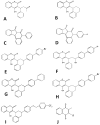A review: poisoning by anticoagulant rodenticides in non-target animals globally
- PMID: 30587672
- PMCID: PMC6395208
- DOI: 10.1292/jvms.17-0717
A review: poisoning by anticoagulant rodenticides in non-target animals globally
Abstract
Worldwide use of anticoagulant rodenticides (ARs) for rodents control has frequently led to secondary poisoning of non-target animals, especially raptors. In spite of the occurrence of many incidents of primary or secondary AR-exposure and poisoning of non-target animals, these incidents have been reported only for individual countries, and there has been no comprehensive worldwide study or review. Furthermore, the AR exposure pathway in raptors has not yet been clearly identified. The aim of this review is therefore to comprehensively analyze the global incidence of primary and secondary AR-exposure in non-target animals, and to explore the exposure pathways. We reviewed the published literature, which reported AR residues in the non-target animals between 1998 and 2015, indicated that various raptor species had over 60% AR- detection rate and have a risk of AR poisoning. According to several papers studied on diets of raptor species, although rodents are the most common diets of raptors, some raptor species prey mainly on non-rodents. Therefore, preying on targeted rodents does not necessarily explain all causes of secondary AR-exposure of raptors. Since AR residue-detection was also reported in non-target mammals, birds, reptiles and invertebrates, which are the dominant prey of some raptors, AR residues in these animals, as well as in target rodents, could be the exposure source of ARs to raptors.
Keywords: anticoagulant rodenticide; comprehensive review; non-target animal; raptor; residue.
Conflict of interest statement
The authors declare no conflict of interest.
Figures



References
-
- Borrell B.2011. Where eagles die. NATNEWS 2011: .
-
- Carl D. M., Michael N. K.1995. Are red-tailed hawks and great horned owls diurnal-nocturnal dietary counterparts? Wilson Bull. 107: 615–628.
-
- Chiba Y., Chiba H.2014. Ogasawara Buzzard (Buteo buteo toyoshimai) utilizes small islands of the Bonin (Ogasawara) Islands during the rodenticides application season. Tokyo Metrop. Univ. Institutional Repos.: 67–79 (The title in Japanese is translated into English by the authors).
Publication types
MeSH terms
Substances
LinkOut - more resources
Full Text Sources
Medical
Research Materials

